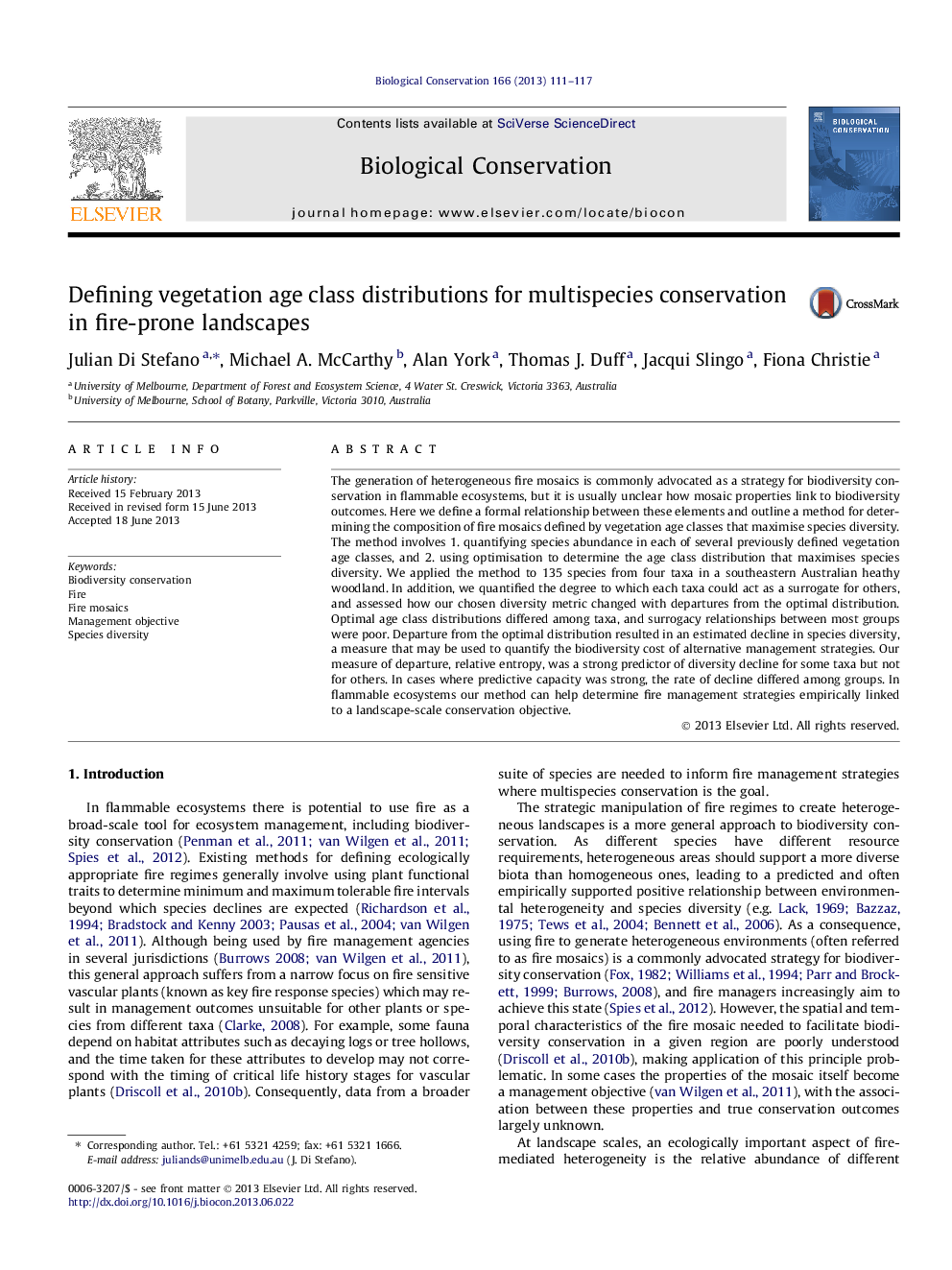| کد مقاله | کد نشریه | سال انتشار | مقاله انگلیسی | نسخه تمام متن |
|---|---|---|---|---|
| 6300783 | 1617935 | 2013 | 7 صفحه PDF | دانلود رایگان |
- A formal relationship between the distribution of vegetation age classes and species diversity is defined.
- The vegetation age class distribution that maximises species diversity is determined.
- An operational objective linked to conservation outcomes is defined.
- A measure is produced for quantifying the biodiversity cost of alternative management actions.
The generation of heterogeneous fire mosaics is commonly advocated as a strategy for biodiversity conservation in flammable ecosystems, but it is usually unclear how mosaic properties link to biodiversity outcomes. Here we define a formal relationship between these elements and outline a method for determining the composition of fire mosaics defined by vegetation age classes that maximise species diversity. The method involves 1. quantifying species abundance in each of several previously defined vegetation age classes, and 2. using optimisation to determine the age class distribution that maximises species diversity. We applied the method to 135 species from four taxa in a southeastern Australian heathy woodland. In addition, we quantified the degree to which each taxa could act as a surrogate for others, and assessed how our chosen diversity metric changed with departures from the optimal distribution. Optimal age class distributions differed among taxa, and surrogacy relationships between most groups were poor. Departure from the optimal distribution resulted in an estimated decline in species diversity, a measure that may be used to quantify the biodiversity cost of alternative management strategies. Our measure of departure, relative entropy, was a strong predictor of diversity decline for some taxa but not for others. In cases where predictive capacity was strong, the rate of decline differed among groups. In flammable ecosystems our method can help determine fire management strategies empirically linked to a landscape-scale conservation objective.
Journal: Biological Conservation - Volume 166, October 2013, Pages 111-117
